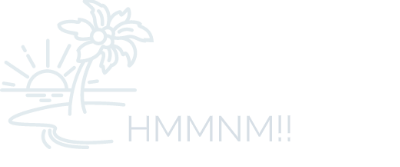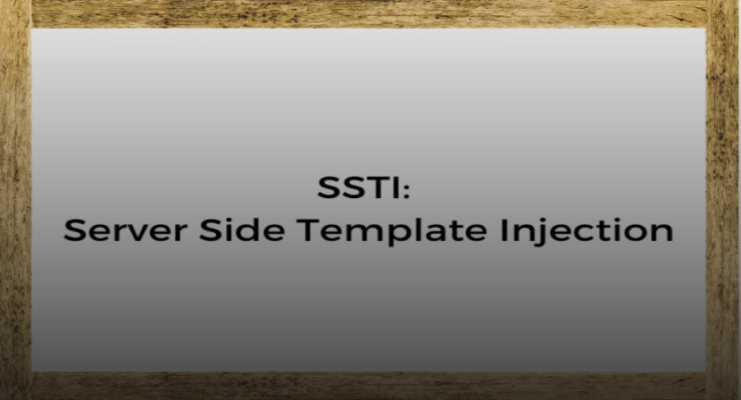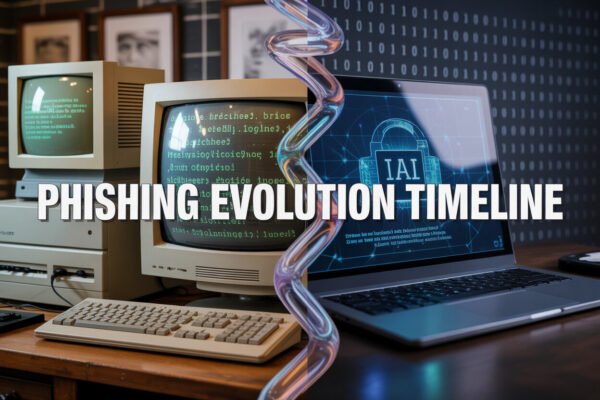Level: Beginner
Reconnaissance and Enumeration
Reconnaissance and enumeration are essential in the area of ethical hacking for ethical hackers to learn about the target system or network. Ethical hackers actively utilize several tools and methods during these early stages to discover vulnerabilities, gather intelligence, and understand network infrastructure. Ethical hackers can use these techniques to build a solid basis for penetration testing and vulnerability assessment. This chapter will explore various tools and tactics crucial for ethical hackers as we delve into the fundamentals of reconnaissance and enumeration.
- Use Reconnaissance Tools
For network and host enumeration, reconnaissance tools such as Nmap, Nikto, and Shodan are essential. An effective and flexible network scanning tool called Nmap enables ethical hackers to find open ports, identify active hosts, and determine the service versions that are currently active on target systems. While Nikto concentrates on web server scanning, flagging potential flaws and incorrect configurations. A specialised search engine called Shodan makes it possible to explore devices linked to the internet, giving information on exposed services and potential access points.
An ethical hacker uses Nmap to scan a target network and discovers that port 22 (SSH) is open on a particular host, indicating a potential entry point for further investigation.
- Enumeration of DNS
A crucial part of reconnaissance is DNS enumeration, which aids in mapping the target’s domain infrastructure. Ethical hackers can gather data on DNS servers, perform zone transfers, locate subdomains, and extract useful information that can help in later phases of the penetration testing process by using tools like DNSRecon, DNSenum, and Fierce.
- Enumeration of Subdomains
Subdomain enumeration aims to find additional subdomains connected to the target company. Ethical hackers can systematically check for subdomains that might have been missed during initial reconnaissance using tools like Amass, Sublist3r, or SubFinder. This procedure broadens the attack surface and offers prospective access points for more in-depth investigation.
Using the tool Amass, an ethical hacker finds additional subdomains associated with the target organisation, such as “dev.targetcompany.com,” which provides a new avenue for potential attacks.
- Maps of the Network
Visualising and comprehending the target’s network infrastructure is part of network mapping. Ethical hackers can record and examine network traffic using tools like Wireshark, a popular network protocol analyser, which enables them to identify hosts, find vulnerabilities, and map the links between systems. A flexible networking tool called Netcat helps with discovering open ports, creating connections to networks, and even file transfers across PCs.
Utilising Wireshark, an ethical hacker captures network traffic and identifies a vulnerable system within the target network communicating with an external IP address.
- Service Enumeration
The goal of service enumeration is to locate services that are active on target systems and collect details about their settings. While SNMPWalk assists in finding SNMP (Simple Network Management Protocol) services and getting useful data, such as system configurations and network statistics, Enum4linux specialises in enumerating information from Windows and Samba systems.
- Reverse IP Lookup
Finding other domains hosted on the same IP address is the goal of a reverse IP lookup. By exposing additional domains linked to the target’s infrastructure, tools like IP2Location and DNS Dumpster offer useful insights. This information may be possible to identify connected systems and prospective attack paths.
Using IP2Location, an ethical hacker performs a reverse IP lookup on a target’s domain. It discovers several other domains hosted on the same IP address, indicating interconnected systems that could be potential attack vectors.
- WHOIS search
Ethical hackers can acquire domain ownership and registration facts using a WHOIS Lookup. By accessing WHOIS databases, hackers can access vital details, including the domain registrar, registration and expiration dates, and contact information. This data makes understanding the target organisation and its digital footprint easier.
By querying WHOIS databases, an ethical hacker obtains information about a target’s domain registration, including the registrar, registration and expiration dates, and contact details, which helps understand the target organisation.
- Social Engineering Section
Effective social engineering involves coercing people within the target organisation to obtain crucial information. Ethical hackers may use strategies like phishing emails, pretexting, or impersonation to obtain sensitive data. To use social engineering to persuade others to divulge sensitive information, one must have a thorough understanding of human psychology and strong communication abilities.
An ethical hacker sends a phishing email to an employee of the target organisation, posing as an IT support technician, and successfully convinces the employee to reveal their login credentials, providing unauthorised access to the target’s systems.
- Database of Google Hacking
The Google Hacking Database (GHDB) is invaluable for complex search queries and potential weaknesses. Ethical hackers can find sensitive information, secret directories, unprotected databases, and other security flaws using specialised search operators and cutting-edge approaches. Hackers can use Google’s indexing capabilities by examining the GHDB to find potential entry points into the target’s infrastructure.
- Network scanning
Ethical hackers thoroughly examine a network during network scanning to find open ports, services, and potential vulnerabilities. Ethical hackers may obtain comprehensive data about network hosts, their operating systems, and the services they use on them thanks to tools like Angry IP Scanner and OpenVAS, which make the scanning process easier. Hackers can find possible security holes and then prioritise their subsequent activities by running thorough network scans.
Gathering Information and Making Discovery
- Finding Hidden Directories
Ethical hackers can use tools like DirBuster, Gobuster, or Dirsearch to find hidden folders or files on a target website. These programmes systematically comb online directories to find pathways that are not explicitly connected or discoverable. Locating hidden directories might offer vital hints about possible weaknesses or exposed sensitive information.
- Check the Robots.txt File
A website’s Robots.txt file informs search engine crawlers which parts of the site should not be crawled. Ethical hackers can find paths or directories that developers intended to be private by looking through the Robots.txt file. This file frequently has useful information that can help find resources that aren’t password-protected or hidden on the website.
- Email enumeration
Tools like the Harvester, Recon-ng, or Hunter aid in the email enumeration process, where ethical hackers gather information on email addresses connected to the target organization. These tools scan public sources, conduct data mining, and collect email addresses, which can be useful for pinpointing potential entry sites for phishing attacks.
- Check the Website Archive
The Wayback Machine is an example of the Website Archive, which provides access to old screenshots of websites. By examining earlier versions of a website, ethical hackers can actively detect changes, track the development of the site’s infrastructure, and identify potentially vulnerable components that may have been altered or removed over time.
- Check for DNS Transfer Zones
The structure of a target’s domain is described by DNS Transfer Zones, which may also show up as additional subdomains or configuration errors. Ethical hackers can learn useful information about the domain hierarchy and spot potential vulnerabilities by performing DNS zone transfers.
- Google Dummies
Ethical hackers can locate indexed data on the target using Google Dorks and skilled search queries. Hackers can use Google’s comprehensive indexing capabilities to build precise search searches that reveal confidential data, exposed directories, or even passwords. An ethical hacker’s arsenal should include Google Dorks, which can be used to find sensitive or obscure parts of the target’s online presence.
- Examining Social Media
Social networking sites offer a plethora of knowledge about people and organisations. Ethical hackers can obtain useful information, such as personal facts, relationships, interests, or potential entry points, by scouring the social media profiles linked to the target. The target’s digital footprint can be better understood overall or for social engineering assaults using this information.
- Check the Certificate Transparency Logs
The information in all SSL certificates granted for a specific domain is available in Certificate Transparency Logs, such as those offered by crt.sh. By searching these logs, ethical hackers can locate potentially harmful or incorrectly configured certificates, unauthorised certificate issuers, and even extra subdomains connected to the target’s infrastructure.
- Check the ASN (Autonomous System Number)
An Autonomous System Number (ASN), a unique identification code, is assigned to a network or organization responsible for managing a component of the internet’s routing infrastructure. By determining the target’s ASN, ethical hackers can find related IP ranges, subnets, and potential network connections. This knowledge assists in understanding the target’s infrastructure and identifying potential attack vectors, simplifying the process.
- Utilise search engines
Alternative search engines to Google, such as Bing, Baidu, or DuckDuckGo, might be useful tools for discovering possibly ignored material. The indexing techniques and coverage of each search engine differ. This information not appearing in Google search results may still be available elsewhere. Ethical hackers use multiple search engines to extend their search and find data that may be essential for their evaluations.
- Verify the Platforms for Bug Bounty
Platforms for bug bounties give ethical hackers a place to report vulnerabilities they find in exchange for compensation. Ethical hackers can learn more about potential vulnerabilities that have already been found in the target’s systems by analysing previously publicised reports on these platforms. This information aids in concentrating on areas of recognised weakness and preventing effort duplication.
- Use public datasets
Public datasets offer much knowledge about websites, content, and potential weaknesses. Examples include those found on websites like CommonCrawl and Rapid7’s OpenData. These datasets can be mined for insightful information and trends that help ethical hackers comprehend the target’s digital footprint, spot potential vulnerabilities, or discover novel attack paths.
- Participate in the Bug Bounty forums
or ethical hackers, bug bounty forums and networks provide useful venues for exchanging knowledge, skills, and vulnerabilities they have found. Participating in these forums allows hackers to share expertise, learn from others, and obtain fresh insights that help them better grasp security concerns and penetration testing strategies.
- Social Engineering Section
As already established, social engineering is essential to information gathering. Ethical hackers can obtain useful information by contacting people or departments within the target organisation while pretending to be genuine consumers or service providers. Social engineering strategies include obtaining information over the phone, posing as a trusted employee in an email, or preying on biases to get private information. Usually, ethical hackers don’t prefer Social engineering.
Identification and exploitation of vulnerabilities
- The Use of Fingerprints
Identifying the software and versions used by the target machine or network is the fingerprinting process. Ethical hackers can learn much about the target’s technology stack by looking at network responses, server headers, or certain protocol behaviours. This information aids in finding potential flaws or weaknesses related to particular software versions.
- Check the Error Messages
Although people often overlook error signals, these signals can provide crucial information about the underlying technology of a target system. Ethical hackers can learn more about the software, database systems, or frameworks used by carefully scrutinising error messages. This data makes it easier to spot any vulnerabilities or misconfigurations that could be used against you.
- Check the RSS/Atom Feeds
RSS/Atom feeds are frequently utilised to syndicate material and offer regular updates. These feeds might have intriguing URLs or endpoints that ethical hackers might find useful. Hackers can find hidden resources or possibly exposed information that will help them in their penetration testing efforts by tracking and examining RSS/Atom feeds related to the target.
- Verify File Metadata
Metadata, which offers additional details about the file and its provenance, is frequently present in documents and photos. Ethical hackers can extract metadata by manually examining file properties or utilizing various tools. This metadata may reveal the author, production date, programme, and geolocation data. Hackers can learn information that aids in discovering vulnerabilities and their subsequent exploitation by looking at file metadata.
- Code Review
Ethical hackers can do a thorough code examination if the target’s applications or website’s source code is accessible. By examining the codebase, hackers can find potential vulnerabilities, unsafe coding techniques, or misconfigurations. To effectively find exploitable vulnerabilities during code review, one must possess programming language skills and a thorough understanding of security best practices.
- Check for Debug Parameters
Checking for debug settings on websites is crucial during the reconnaissance stage. Adding parameters like “Debug=1” or similar to the URL allows access to websites with enabled debugging tools, which can provide valuable information. Debug parameters may expose details about the system’s internal operations, error messages, or even sensitive data, enabling the identification of potential security vulnerabilities.
- Check the X-Robots-Tag Headers
Examining a website’s X-Robots-Tag headers is an essential component of reconnaissance. These headers tell search engine crawlers what information should be indexed and what should be skipped over. Ethical hackers can find files or folders that developers might not wish to be easily accessible by examining these headers. This knowledge can be a springboard for additional inquiry and future commercialisation.
- Use API Enumeration Tools
Application Programming Interfaces, or APIs, are essential to many contemporary web applications. Investigating the target system or network’s APIs is crucial during reconnaissance. These days, security experts can interact with APIs, send requests, and examine the results thanks to tools like Postman and Swagger. Enumerating APIs can assist in identifying endpoints, methods, and potential security holes that could be exploited for intrusive access or data exposure.
- Examine Various User Agents
Depending on the User-Agent header given by the client’s web browser, websites frequently serve varying content. Ethical hackers should experiment with alternative User Agents during the reconnaissance phase to look for any potential variations in the responses they receive. Security experts can find hidden content, debug pages, or even unauthorised access points that might not be evident in typical browsing settings by simulating various User Agents.
- Check for CORS Configuration Errors
Cross-Origin Resource Sharing (CORS) enables web browsers to send requests to various domains. Security flaws may result from CORS policies that have been configured incorrectly. It is critical to look for CORS setup errors during reconnaissance that could permit unauthorised access to sensitive resources. Ethical hackers can find potential CORS holes and exploit them to obtain unauthorised access or extract sensitive information by sending cross-origin requests and examining the server’s answers.
- Port-scanning Section
A crucial reconnaissance method called port scanning includes looking for open ports on the target system or network. Scanning all 65535 ports using tools like Nmap or Masscan ensures complete coverage. Port scanning aids in locating exposed services, prospective points of entry, and openings for more investigation and exploitation. Ethical hackers might learn important details about the target’s network architecture and potential vulnerabilities by examining the results of a port scan.
- Exploit databases
attack databases, like the Exploit Database (EDB), offer a thorough assortment of identified vulnerabilities and related attack codes. Ethical hackers can search these databases to find flaws in the systems or software versions of the target. For penetration testing, exploit databases are useful for spotting known flaws and utilising existing exploit code.
- Vulnerability Scanners
Automated vulnerability scanning tools like Nessus, OpenVAS, or QualysGuard find potential weaknesses in the target’s systems. These scanners run thorough tests on the target infrastructure using a database of known vulnerabilities. Ethical hackers can quickly find vulnerabilities and focus their efforts by doing vulnerability scans.
- Manual Vulnerability Testing
Vulnerability scanners are useful, but manual testing enables ethical hackers to find sophisticated or undetectable flaws that automated tools would overlook. Hackers can investigate unique attack paths, confirm the existence of vulnerabilities, or conduct in-depth studies of particular regions within the target’s systems by doing manual tests. An in-depth knowledge of the target’s technology stack and proficiency in security testing methodologies are prerequisites for manual testing.
- Development of Exploits
Ethical hackers may need to create exploits if preexisting exploit codes or tools are unavailable. Exploit development includes examining the target’s systems, spotting weaknesses, and creating unique exploits to exploit those flaws. This advanced technique requires a deep understanding of programming languages, system internals, and security principles.
- Techniques for Post-Exploitation
After successfully exploiting a vulnerability, ethical hackers may employ post-exploitation tactics to maintain access, escalate privileges, or further explore the target’s systems. Hackers can learn more about the target’s infrastructure and find new vulnerabilities or sensitive information using privilege escalation, lateral movement, and data exfiltration.
- Documentation and Reporting
Ethical hackers must keep thorough records of the discovery, information collecting, vulnerability identification, and exploitation processes. The findings, techniques, and potential effects of the vulnerabilities must be detailed in a thorough report. This report serves as an evaluation record and offers the target organisation practical recommendations for addressing deficiencies.




